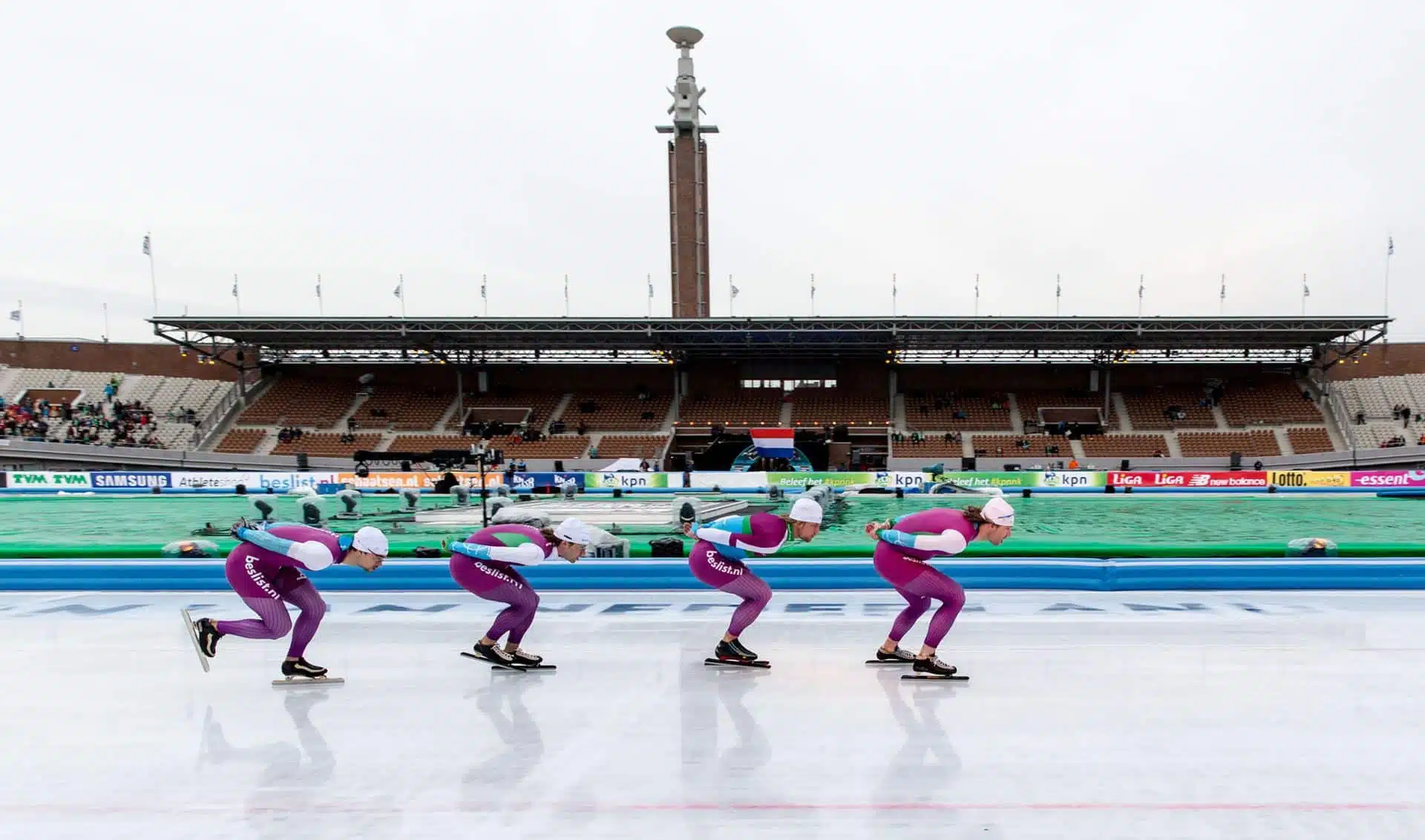Maintaining an ice rink for top-level sports requires professional skills. Every type of ice sport requires its own quality of ice and maintenance rules and the ideal temperature of the ice varies from sport to sport. Moreover, an indoor ice rink demands other qualities from the ice maker than when the top-class sport is practised outdoors.
During a figure skating competition, for example, the ice must not be too hard because it could easily break when the skater lands after a jump. On the other hand, the ice for a long-distance skating competition must not be too thick because the topmost layer will not be able to retain its temperature. If a curling competition is being held, there cannot be any grooves whatsoever in the ice to ensure that the curling stone will stay perfectly on course. There are many more criteria with regard to the quality of the ice that must be meticulously monitored, of which the most important are set out in this article.
Purity
It is important to take the purity of the water into account when creating an ice rink as this has an impact on the hardness of the ice. We can, for example, increase the density of the ice by removing as many chemicals and minerals and as much oxygen as possible. This is particularly important for speed sports. In contrast, sports like ice hockey and figure skating require ice that is not so hard, because it is more prone to breaking on account of the force the athletes put on the ice during a competition.
Thickness and smoothness
The ice of a competition rink must be thick enough to survive the competition, but the layer of ice above the track markings must not be too thick to ensure that the lines remain clearly visible. Otherwise, this could lead to confusion during a competition. Additionally, a layer of ice that is too thick will prevent cold from being optimally transmitted to the top-most layer. Aside from thickness, smoothness is also very important. An ice hockey competition will cause many grooves to be quickly etched into the ice, which can be annoying – or even dangerous – for the players. Smoothness is also very important in curling competitions, because the stone must not be able to make any unexpected movements. An ice resurfacer can create precisely the right thickness for a smooth top layer.
Temperature of the ice
The temperature of the ice must be between -3 °C and -10 °C, depending on the sport:
• Figure skating: – 4.5 °C to -3 °C
• Ice hockey: -5.5 °C to -3 °C
• Short track: -5.5 °C to -3 °C
• Curling: -6 °C to -3 °C
• Long-distance skating: -10 °C to -6 °C
As you can see, there are substantial differences in the ideal ice temperature for each sport. Nevertheless, in some situations a rink will be used for multiple sports. Figure skating and short-track competitions can, for example, be held on the same rink. The rink can be made colder – and therefore harder – immediately after a figure skating competition to prepare it for a short-track skating race.
Ambient temperature
The ambient temperature also has an effect on the quality of the ice. If the competition is held in a stadium, you will need to take the heat and moisture produced by the spectators and fans into account. If it is raining outside the ice hall, the humidity will increase inside the hall on account of the damp clothing worn by the spectators, and this moist air will then precipitate onto the top layer, making it uneven. Proper ventilation and good air drying are of great help to the ice master.
Skating competitions on artificial ice rinks can also take place outdoors. If so, the ice master must be aware of the effects produced by the sun, the wind and precipitation on the ice. The ice master can create the same circumstances for all participants by adjusting the temperature of the ice on the tracks and by controlling the mopping pattern of the ice resurfacers.
Ice-World: the experienced partner in top-class sports ice rinks
Worldwide, Ice-World has implemented more than 50 professional ice rink projects for major and minor sports events. It takes only a few days to render an Ice-World sports ice rink fully operational, whether for a temporary event or at a permanent location. A professional ice hockey facility, a fast short-track skating rink or a certified 400-metre track: Ice-World can install it for you. Considering that the number of ice-skating venues and ice sports centres is rapidly dwindling, this is the solution for successful sports moments on ice.
The biggest advantage of an Ice-World ice rink is that the patented Ice-World ice rink elements are completely surrounded by ice. As a result, the quality of the top layer is much easier to assess, and can therefore be adapted much faster. All other existing systems are installed directly onto the underlying surface, which implies a much slower influence over the topmost layer.
A favourable side effect of this setup is that the Ice-World system is up to 40% more energy-efficient compared to other ice rink systems.
5 reasons to opt for an Ice-World ice rink
- 40% more efficient than other ice rink systems
- Unprecedented installation and dismantling times: an ice hockey rink ready within 48 hours
- High quality of the ice up to 30 °C/86 °F at every type of location
- Ice quality recognised by official institutions such as the KNSB, the IIHF and the ISU.
- 24/7 support during the event





